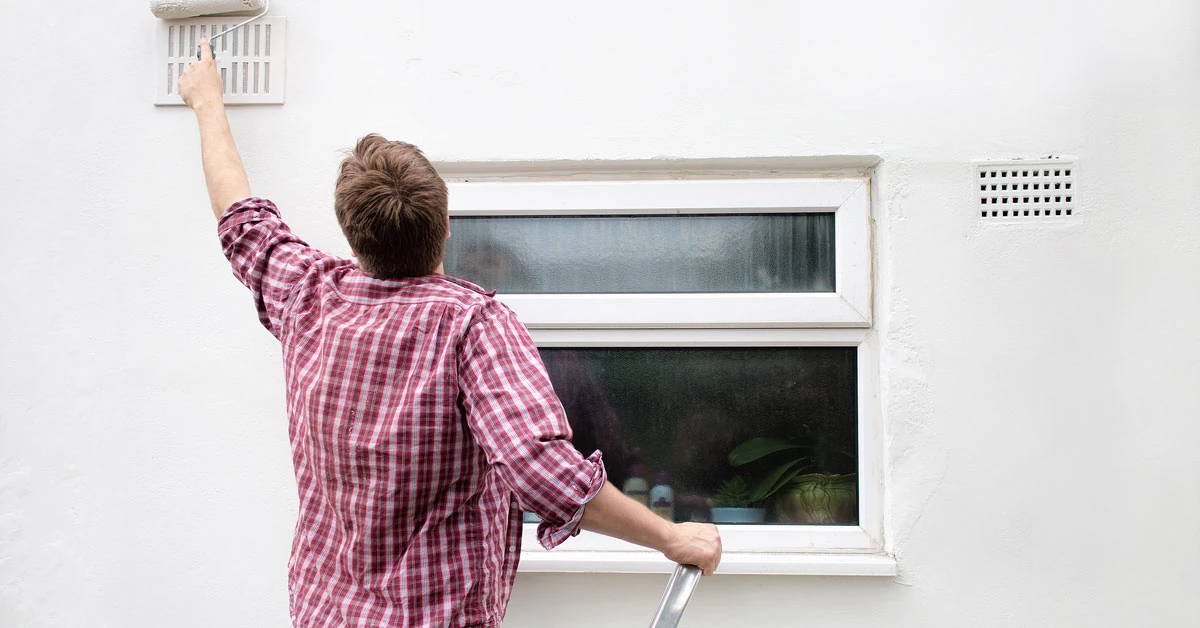Home Decorating Tips


Home Decorating Tips
Reminders for Painting in the Rainy Season
Posted on September 7, 2021
Last updated May 21, 2025
Rainy days may not seem like the best time to apply a fresh coat of paint inside or outside your house. Contrary to popular belief though, you can breathe new life into your walls and surfaces despite the gloomy weather. You just need to figure out the type of paints you should use and the ideal conditions for carrying out this task and examine your environments carefully.
So don’t let a sudden downpour rain on your parade (no pun intended)! Painting during the rainy season is possible when you know what to do. Continue reading to discover the types of paint you should be using in this weather, and other tips to get the job done.
What’s the Best Paint for Rainy Weather?
Not all paints are made for the rainy weather, so carefully consider which options would work for walls or surfaces:
- Latex paints and acrylic paints: These can stand moisture better and don’t easily peel or crack. In particular, latex paint combined with an acrylic binder is often recommended for places that experience a lot of moisture, because they can last longer on surfaces.
- Water-based paints: Their strong points include their quick drying time (typically within six hours) and reduced instances of paint cracks or peels. When applied to a surface, water-based paints can expand and contract. As such, they may be your best choice for exterior walls or surfaces.
- Oil-based paints: The trickiest to handle out of these three, oil-based paints are stain-resistant and work well when painted on metal due to their chip-resistant capability. When painted on walls, oil paints make the surface easier to clean, although repeated cleaning can cause excess shine.
However, experts have recommended avoiding oil paints, especially for exterior surfaces. Oil-based paints are unable to combat moisture well, emit an irritating odor once applied (although it usually dissipates in time), fade faster than latex paint, tend to be flammable, and can cost more compared to water-based paints. Furthermore, oil-based paints may not look good on wood and can lose their color quicker once applied on masonry.
Other Rainy Weather Painting Reminders
The #1 rule when painting during rainy weather is to make sure that the rain will not touch the targeted surface, whether inside or outside the house.
Wet walls prevent the paint from being absorbed into the surface and cause the paint to wash away, resulting in a messy job. A surefire way to avoid this problem would be to close all windows and doors leading to the room you’re working on. Take note of these other tips when painting during the rainy season:
- Avoid painting too early in the morning or too late in the afternoon.
- If you live in a humid area, watch out for condensation and molds that can appear on the walls and affect how your paint job will look like.
- Try to turn on the air conditioner or use a dehumidifier (only if it’s cool outside) a day before painting, during the task, and one day after to help reduce moisture in the air. You can also opt to turn on a ceiling or box fan to help the paint dry.
- Be careful and patient. Inspect the surface you’re working on thoroughly before applying another coat. Plus, expect longer paint drying times because rainy days signal the absence of sunlight.
- If you want to speed up the drying process, open doors and windows for increased airflow and ventilation, while making sure rain doesn’t reach the surface. Fans and blow heaters can work too if the weather is too cold for an open window or you’re painting inside an open-planned room.
- Watch out for temperatures, particularly of your surface and of your room. Make sure your surface’s temperature is at 10 degrees C, or as stated otherwise in instructions on the paint can. As for the room you’re in, the temperature needs to be higher than that of the surface you intend to paint on. Maintain room temperature at 10 degrees C and above. If not possible, check the can for additional information about the ideal conditions stated for the paint you’re using.
- If the rain has passed and you’re painting exterior walls or surfaces, let them dry first for at least four hours to one day before painting or applying another coat. This will let moisture evaporate from the surfaces, ensure you have a dry surface for painting, and prevent unwanted liquid from affecting your paint job.
These tips prove that you don’t need to wait for the rain to go away to start painting your home. With Island Premium Paints, the Philippines’ first local paint with a Product Satisfaction Guarantee, you certainly can! Check out more home improvement and decoration ideas and inspiration here, plan your tasks one day at a time, and say hello to better-looking walls and surfaces!
Sources:
https://www.thespruce.com/can-you-paint-a-house-when-it-rains-1821060
https://homeguides.sfgate.com/paint-interior-walls-damp-weather-20271.html
https://nashvillepaintingcompany.com/best-exterior-paint-for-rainy-weather/
https://www.stanfordpainting.com/blog/articles/The-Best-Paint-to-Withstand-Rainy-Weather
Our Products
Our line of high quality paints and products will give your home or project the vibrancy it needs.
Explore Colors
Ready to explore colorful possibiliies today? View our popular paint colo combination palettes for great color schemes and room design ideas for interior and exteriors.



